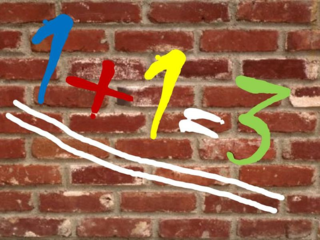 “The most important single ingredient in the formula of success is knowing how to get along with people.” – Theodore Roosevelt
“The most important single ingredient in the formula of success is knowing how to get along with people.” – Theodore Roosevelt
I’ve got a riddle for you: when does 1 + 1 equal more than 2?
Answer: When it’s a working partnership.
Think about some successful examples from business and culture: Ben & Jerry. Jobs and Wozniak. Lennon & McCartney. Astaire & Rogers. Peanut butter & jelly.
In these or other famous partnerships, the combined forces of the two people become more than the sum of the parts.
A whole new entity is created that itself produces what we know as the almost magical outcome: delicious ice cream, a whole new way of computing, iconic music, fluid dancing, a sandwich.
But most successful sustainable partnerships don’t just happen: it takes real work. Most effective working relationships that last are intentionally designed, rather than left to chance.
So, how do you create a successful working partnership?
Successful pairs:
- Have a common mission & vision: everyone knows where they are headed. Whether it’s ice cream, computers, music, or dance, the overarching goal or end result is clear.
- Leverage the opportunity and power of diversity: they appreciate and build from having unique but complementary skills. Lennon and McCartney had different musical talents, but they complemented each other.
- Are interdependent, and open to influence from the other. Astaire and Rogers were talented dancers individually in their own rights, but when they danced together, there was a give and take, and the outcome was more than either could do alone.
- Build skills to develop and nurture the relationship: have high degrees of trust, communication skills, ability to work through conflict. Without this ability, the partnership will break.
- Seek out learning through on-going self-assessment, feedback & mentoring and formal education and development. Successful partnerships don’t create in a vacuum, and they don’t expect to have all the answers themselves.
If I had to sum it up, what makes teams and partnerships successful ultimately is high degrees of emotional intelligence.
People are hired for their technical competency, and mastery of technical skills is what creates an outstanding individual contributor.
But to in order to effectively lead and co-lead in this world, you need an additional interpersonal skill set: the ability to listen, communicate, and collaborate, which are decidedly relational competencies.
Improving our emotional intelligence at work means learning how to work with emotions, rather than burying them or ignoring them. Being emotionally intelligent at work means identifying and acknowledging our own emotions; understanding how to regulate and manage ourselves under stress; having empathy and being able to relate to the emotional experiences of others; so that we can have the best positive impact with others and on our projects.
If this idea of improving your working relationships appeals to you, check out my coaching program designed specifically for working pairs, especially those in executive or director level roles, that builds and expands on these concepts!
Your Turn
In the Comments below, talk to me about what you know about successful partnerships at work and emotional intelligence.
What makes your working relationships work?

 Before specializing as a professional coach in 2004, I spent more than a decade in leadership, management and program development for state and local government and non-profit organizations. Now I get to help leaders and teams have more clarity and ability to stand up for what's important in their work and in their organizations. Working with me, leaders and teams find more meaning and purpose, feel happier and more confident, navigate change and conflict, and work together better.
Before specializing as a professional coach in 2004, I spent more than a decade in leadership, management and program development for state and local government and non-profit organizations. Now I get to help leaders and teams have more clarity and ability to stand up for what's important in their work and in their organizations. Working with me, leaders and teams find more meaning and purpose, feel happier and more confident, navigate change and conflict, and work together better.
Leave a Reply